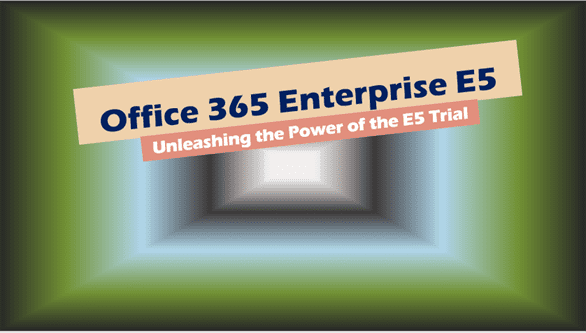Easy Guide to Portal Microsoft Login
Portal Microsoft Login: The Microsoft Portal offers a centralized platform for various Microsoft products, making it a crucial tool for users around the world. This technology provides a gateway to applications like Microsoft Teams, OneDrive, Outlook, and many others, facilitating efficiency and streamlined workflows.
As such, understanding what Microsoft Portal is and how to effectively log into it remains a critical step. As a fellow user or prospective user, this treatise will guide you through a comprehensive understanding of the Microsoft Portal system, from navigation, login procedures, to essential safety measures in keeping your account secure.
Understanding Microsoft Portal
The Microsoft Powerhouse: Understanding the Power of Microsoft Portal
Without a doubt, Microsoft has become synonymous with innovation and simplifying complexity in the digital landscape. Cradled within its labyrinthine suite of systems, Microsoft offers a powerful tool capable of transforming the way businesses function and interact. Enter the realm of Microsoft Portal.
Microsoft Portal is an integrated, web-based platform designed to streamline and simplify enterprises’ interaction with various business applications and cater for their complex needs. It is a robust podium that provides a more compelling user experience by allowing users to aggregate data from different sources into a central repository.
Imagine a unified interface where you can access all your applications, manage your information systems, coordinate your teams, and maintain customer relationships. That’s the power of the Microsoft Portal. It’s transforming the way organizations operate, but why is it essential for you?
1. Integrated Access to Diverse Applications
An average enterprise runs on multiple systems and applications; coordinating across these can be a logistical nightmare. Microsoft Portal promises a streamlined experience by providing integrated access to diverse applications. By enabling one point of entry to various services, it enhances productivity by saving time and eliminating the need for multiple logins.
2. Enhanced User Experience
User experience is the cornerstone for the adoption of any software, and Microsoft Portal scores high on this. It facilitates customization and personalization, ensuring the user interface is tailored to your specific requirements. This elevates not only the user experience but also boosts productivity.
3. Business Intelligence (BI)
Recognizing the growing surge for data-driven decisions, Microsoft Portal offers integrated BI tools. With it, you can aggregate, analyze, and visualize your data, empowering your business to make strategic decisions based on actionable insights.
4. Cross-Platform Accessibility
Irrespective of the device or platform one uses, Microsoft Portal delivers seamless accessibility. This cross-platform compatibility aids in maintaining the continuity of work, regardless of your employees’ location or preferred device.
5. Security and Compliance
When consolidating business applications and data, security and compliance become paramount. Microsoft Portal offers robust security features, ensuring your data and systems are protected and adhere to regulatory compliances.
In today’s business world, efficiency, collaboration, and seamless integration are key to staying competitive. Microsoft Portal is an embodiment of these elements, a platform designed to serve as a digital companion for enterprises. It promises an era of smooth integration, enhanced user experience, and informed decision-making, empowering businesses to run smarter and more efficiently. If efficiency is what you seek, then Microsoft Portal is the tool you need. Buckle up for a new era of digital transformation.

Portal Microsoft Login Process
The Microsoft Portal has become a lifeline for businesses, offering an integrated suite of applications, customization tools, and security protocols. Now, let’s delve right into the main subject of this piece: how to log into the Microsoft Portal.
The first step is to navigate to the Microsoft Portal’s login page. This can be done by entering ‘portal.office.com’ in the web browser’s address bar. A Microsoft sign in page should now be displayed.
Here, the user is required to provide their Microsoft Office credentials. We’re not talking about any password and username – this needs to be the one that you registered with Microsoft Office. If unsure, check with the IT department or the person who manages Microsoft services in your company.
To continue, simply type-in your email address or the contact number linked with your Microsoft Account in the space provided. The textbox will usually have a watermark saying ‘Enter your email, phone, or Skype.’ Press the next button to proceed.
On the next page, a space for your password will be provided. Type the correct password linked with the account you entered in the previous step. The textbox will usually be titled ‘Password.’ Once done, proceed by clicking the ‘Sign In’ button.
A successful login will redirect to the Microsoft 365 dashboard, where your apps, documents and mail will be accessible. If using a trustworthy device, it is recommended to check the ‘Keep me signed in’ feature to streamline future access.
That’s it – you have successfully logged into the Microsoft Portal.
In case of forgotten passwords, you can retrieve it by clicking on the ‘Forgot Password’ link under the password box. This will direct you to a page where you can reset your password using a secondary email or phone number you specified during your account registration.
For added security, consider activating two-factor authentication, which adds a second verification step to your login procedure. This can be done from your Microsoft Account security settings and contributes to secure device and data management.
In conclusion, logging into Microsoft Portal is a simple process that hardly requires technical skills. Follow these steps, and you’ll be navigating the powerful Microsoft Portal workspace in no time at all. Remember, with power comes responsibility – always secure your login information and ensure you’re complying with your company’s data policies.

Safety Measures for Login
Innovation, quality, and efficiency are the fuels that drive our tech-forward world. These factors converging on one platform – Microsoft Portal, undeniably makes it an essential tool in our modern workspace. However, safety and security could never be overemphasized. Let’s consider a few crucial practices that ensure your Microsoft Portal login remains secure.
A starting point for security is updating your system and applications. Use the newest version of your browser, it provides better protection against phishing and malware threats. Running software updates on your system and applications also patches vulnerabilities, thwarting potential cyber attacks.
Another critical measure is to use strong, unique passwords. Avoid predictable information like names, birthdays or simple sequences. Change your passwords at regular intervals and never reuse old passwords. Specifically, never share your passwords or login credentials. Microsoft will never request for such information.
Whenever possible, use official networks or secure VPNs for your Microsoft portal login process, especially when accessing from a public Wi-Fi or a shared device. This protects your data from potential interception.
Activate Two-Step Verification (also known as two-factor authentication). When this feature is enabled, even if someone manages to guess or steal your password, they will be unable to login without access to your secondary authentication method (usually a text message code sent to your phone). The extra level of security is invaluable.
Regularly review and monitor your account activity. Microsoft provides an Activity page where you can check for unusual activities or locations. Report any suspicious activity right away, better safe than sorry.
Ensure you logout properly from your account, especially when using public computers or shared devices. Merely closing the browser might not sufficiently sign you out!
Consider using Microsoft Authenticator App, it offers two-step verification, passwordless sign-in, and more.
Finally, beware of phishing emails and spoof websites. Double check URLs and email senders. Microsoft will not send suspicious links for you to follow.
In the modern landscape, cybersecurity is a shared responsibility. By practicing these safety measures, you not only protect your data, but also contribute to an overall safer digital environment. No matter the convenience or advancement, security should never be compromised in this relentless march of innovation. Happy secured Microsoft portal logins now and always!

The emphasis placed on digital security cannot be overstated, particularly when it comes to logging into platforms as comprehensive as the Microsoft Portal. Ensuring you have a robust password, frequently altering it, and maintaining the confidentiality of your login credentials represent just a few of the steps you can take to safeguard your information.
With the insights and guidelines shared in this discourse, you are now equipped to effectively navigate and utilize the Microsoft Portal, keeping safety paramount.
Remember, staying informed and vigilant is the cornerstone of effective digital navigation and security in our increasingly connected world.






